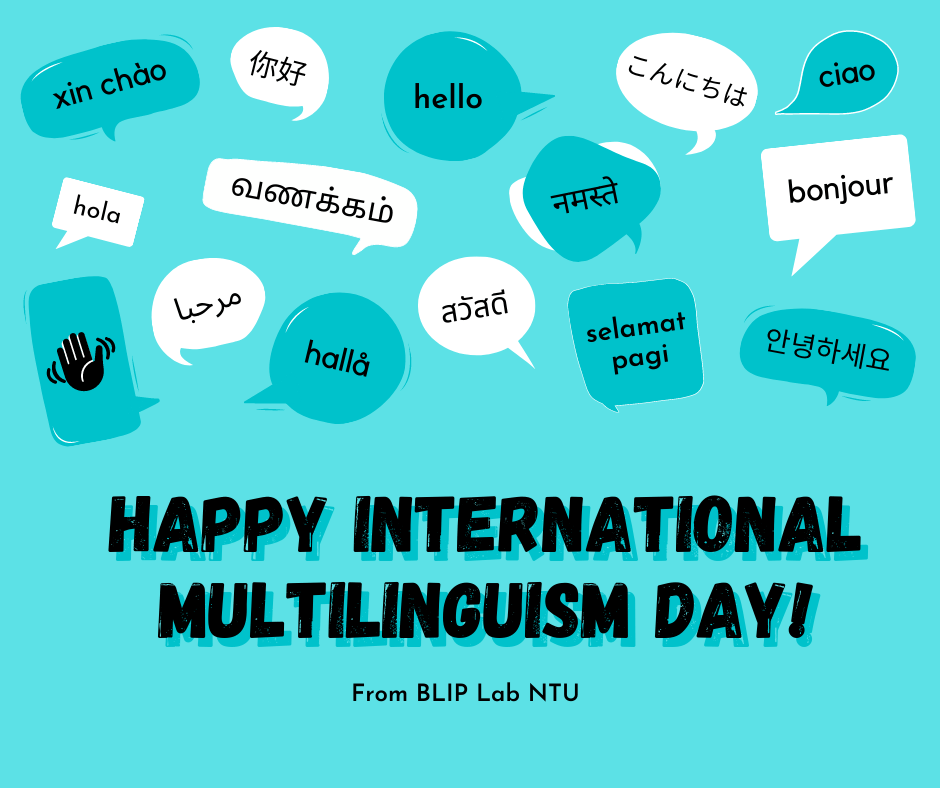
Multilingualism (n.): Using more than one language to speak (or sing), write, read, or understand. Someone who can use more than one language is known as a polyglot or a multilingual.
Today, over 7,000 spoken languages are used, and most of us learn, understand, and/or speak at least more than one language. For International Multilingualism Day, we’ve brought together a few interesting articles we’d like to share with you, to celebrate the use of many different languages in the world 😊
Is joy the same in every language? The National Geographic illustrates how learning unfamiliar words can take us on epic journeys even when we can’t travel, through language.
Link: https://www.nationalgeographic.com/travel/article/is-joy-the-same-in-every-language
Does our brain read Chinese or Spanish the same way it reads English? In one of our previous posts, we summarized an article about how our brain processes different languages due to its different orthographies. Orthographies are symbols used by the various writing systems that represent the spoken languages in the world.
Link: https://blogs.ntu.edu.sg/blip/does-the-brain-read-chinese-the-same-way-it-reads-english/
Original article: https://kids.frontiersin.org/article/10.3389/frym.2016.00026
Myths about early childhood bilingualism. When should my child learn another language? Will my child get confused? My child has a condition which delays language learning, can he/she still learn a second language?
Link: https://blogs.ntu.edu.sg/blip/myths-about-early-childhood-bilingualism/
How can we learn foreign language vocabulary more easily? Would simply listening to new words be enough to learn a new language? Would pictures and gestures help us learn novel words easier? How is learning a new language different for children and adults?
Link: https://kids.frontiersin.org/article/10.3389/frym.2020.00089
Relooking at the critical age for second language learning. You’ve probably heard that children learn a second language more easily than adults before they reach a certain age, which is around the onset of puberty. However, a recent study suggests that this critical period may be up to 17-18 years of age.
Link: https://blogs.ntu.edu.sg/blip/relooking-at-the-critical-age-for-second-language-learning/
Original article: https://bold.expert/window-for-learning-second-language-may-remain-open-longer-than-thought/
Can we forget how to speak our second language? Attrition happens when a previously mastered foreign language is forgotten. How is this possible? Researchers suggested that this is because attrition is not a failure to remember, but more of a failure to retrieve. This means that instead of having forgotten that language entirely, the brain is now finding it more and more difficult to gain access to the previously learned language! How does this happen?
Link: https://blogs.ntu.edu.sg/blip/can-people-forget-how-to-speak-their-second-language/
Original article: https://doi.org/10.3389/fnhum.2019.00397
Multilingual Memories. In Singapore, we’re used to hearing many different languages and dialects in our daily lives. Whether it’s talking to an uncle at the kopitiam or switching between languages to talk with different people, communicating in more than one language isn’t a foreign concept to us. Here are some stories of our multilingual experiences from childhood when most of us start learning languages!
Link: https://blogs.ntu.edu.sg/blip/tag/multilingual-memories/
At the Brain, Language, and Intersensory Perception (BLIP) Lab, we’re curious about how learning particular languages help shape the way we experience our world. Join us as we discover more about the development of babies’ language, learning, and sensory systems! Follow our Facebook page here.